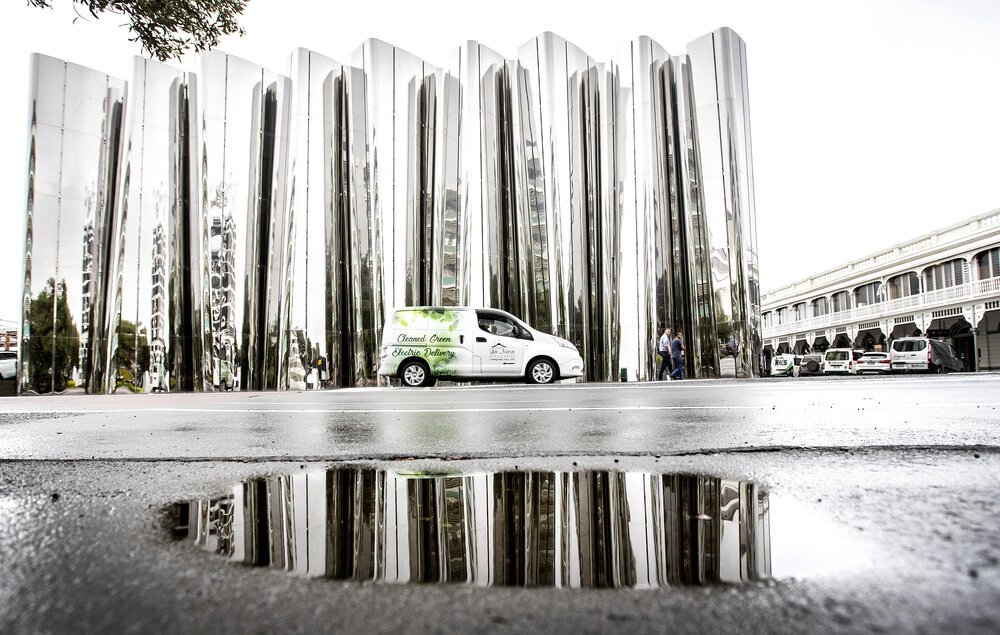Green Transport
Transport in New Zealand makes up about 20% of New Zealand’s total greenhouse gas emissions each year. Taking action to reduce transport emissions is a key area that organisations can in reducing our contribution to climate change and save money too.
Plan to cut yours with Reduce, Share and Electrify
Reduce - cut vehicle KMs travelled. Optimise your fleet ensuring vehicles are well used, routed (job planning) efficiently and fully loaded to cut both tail gate and embedded emissions. Support zoom calls, on-line conferences and digital working. Choose smaller vehicles.
Share - mobility as a service providers can reduce your vehicle needs, optimising use to cut capital, operational and carbon costs! Car-sharing for staff travel can add up when you help tackle the barriers.
Electrify - reduce and share can mean fewer new vehicles, but when you do need new ones then go electric (EV, e-bikes or innovate, like NZ Post!).
And to successfully execute your carbon reductions, remember to combine your investment in tools, facilities and assets with supporting and rewarding behaviour change across your team.
Prioritise car sharing, logistics optimisation and low emissions vehicles (Hint: money does not need to be a barrier)
Prioritising reducing KMs travelled with different work practices; optimising loads, routes and occupancy and “sharing” fleets and capacity with mobility as a service (reduce, share) can make a big impact and cut the embedded carbon in and costs of new vehicles. But when new vehicles are needed, its time to electrify.
Electric and hybrid vehicles are increasingly common in organisations in order to both cut greenhouse gas emissions and save on transport energy costs. Electric vehicles are ideal for within province meetings and other general mileage of shorter distance. Several Taranaki businesses are already using electric vehicles in their fleet, such as such as Powerco, OMV, Kaitake Farm and NPDC.
Alongside this you can also work with your fleet or purchasing officer to prioritise purchase of small cylinder efficient vehicles over larger less efficient ones. See the EECA Business website for more information.
Adopting EVs and low emissions vehicles is a great step but will not be enough to reduce our cumulative CO2 emissions from transport. We have to reduce our vehicle kms travelled (VKMT). If a car absolutely needs to be replaced and used, then find a solution to access an EV as it will help (you may or may not need to buy it!). Then intentionally engineer change so that the vehicle will be shared between organisations, used on a ride share basis and/ or for multiple tasks on every journey to drive down VKMTs and the need for other new cars. If you are a council or employer, provide the infrastructure that rewards this change such as VIP parking for ride share, use of bus lanes, digital tools and behaviour change support to make this easy.
Finally money is no longer a barrier to low carbon! Transport is changing with new mobility as a service models. Providers like Zilch can cut your transport costs and emissions without you needing to find the money for new cars. Be imaginative, cut carbon and cut costs.
Local providers of electric and hybrid vehicles for leased fleets include:
Max Pennington’s Autocity (from mid 2019)
Have bikes or e-bikes for staff use
Many across town work meetings are less than 5km. In these situations it is often faster to bike to a meeting than a car. As an added bonus no car parks need to be found. Electric bikes make the journey quick and easy and can be booked on a businesses fleet management system. Local organisations like New Plymouth District Council are already using these as part of their vehicle fleet, with good take up by staff.
Check out the free Consumer overview of e-bikes to learn more about e-bike and battery types, considerations for your riding needs, and ratings of available options from their rider tests.
Local suppliers of e-bikes:
Support active transport by staff
Are your staff encouraged to bike, walk or catch public transport to work? Can you provide showers or lockers, prizes, management leadership or other incentives? For work trips, can staff be reimbursed for trips made on their bike, or make use of work bus cards?
The Lets Go program at New Plymouth District Council provides training, support and competitions to engage staff in active transport.
Our work with employers has also shown that car sharing can be a surprisingly popular option when its made easy and convenient (hint: support an app like Link and provide VIP parks for sharers). Shifting a few staff with longer commutes makes a big impact!
Provide video conferencing and online meeting facilities
Your organisation’s emissions from flights will reduce significantly if staff are encouraged to replace in-person national or international meetings with good quality video conferencing facilities or online meeting tools. There are a multitude of these now available. Check out Skype, Facetime, Google Hangouts, Zoom or JoinMe and talk to your IT team about trialling them.
Encourage the use of hybrid taxis
When ordering taxis, make a point of asking for a hybrid car. Taxi kilometres can then be recorded at a hybrid rate if your organisation is reporting on its carbon footprint.
Local taxi companies with hybrid vehicles:
Offset your organisation’s flights
Investigate the purchase of high quality carbon offsets to offset emissions from flights your staff still need to make after assessing the above options. Consumer New Zealand evaluated current carbon offset providers in August 2017. The Toitu scheme is run by Landcare Research, while further schemes may be assessed by calling the EECA Business Program.
If you know of other stockists/retailers/suppliers/services or all round fantastic sustainable sources please let us know so that we can share.

